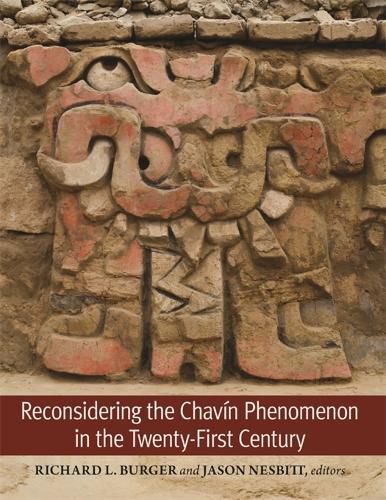Readings Newsletter
Become a Readings Member to make your shopping experience even easier.
Sign in or sign up for free!
You’re not far away from qualifying for FREE standard shipping within Australia
You’ve qualified for FREE standard shipping within Australia
The cart is loading…






The UNESCO World Heritage Site of Chavin de Huantar holds an iconic place in the archaeology of pre-Columbian Peru and is crucial to understanding the emergence of Andean civilization during the early first millennium BCE. Best known for its elaborate religious architecture and distinctive stone sculpture, Chavin de Huantar was the center of a much wider Andean world and the synchronicity of widespread socioeconomic changes coupled with intrusive Chavin material culture and iconography at distant centers suggests that Chavin de Huantar influenced a vast region through the expansion of religious ideology and intensified long-distance interaction.
Reconsidering the Chavin Phenomenon in the Twenty-First Century builds upon a surge of archaeological research over the last twenty years, bringing together the work of scholars researching Chavin de Huantar and its neighbors on the coast, highlands, and ceja de selva. This volume offers a cohesive vision of the Chavin Phenomenon at both the local and interregional level, one which recognizes the high degree of socioeconomic and cultural diversity that existed and the active role of centers outside the Chavin heartland in shaping the radical transformations that occurred within the Chavin Interaction Sphere between 1000 and 400 BCE.
$9.00 standard shipping within Australia
FREE standard shipping within Australia for orders over $100.00
Express & International shipping calculated at checkout
The UNESCO World Heritage Site of Chavin de Huantar holds an iconic place in the archaeology of pre-Columbian Peru and is crucial to understanding the emergence of Andean civilization during the early first millennium BCE. Best known for its elaborate religious architecture and distinctive stone sculpture, Chavin de Huantar was the center of a much wider Andean world and the synchronicity of widespread socioeconomic changes coupled with intrusive Chavin material culture and iconography at distant centers suggests that Chavin de Huantar influenced a vast region through the expansion of religious ideology and intensified long-distance interaction.
Reconsidering the Chavin Phenomenon in the Twenty-First Century builds upon a surge of archaeological research over the last twenty years, bringing together the work of scholars researching Chavin de Huantar and its neighbors on the coast, highlands, and ceja de selva. This volume offers a cohesive vision of the Chavin Phenomenon at both the local and interregional level, one which recognizes the high degree of socioeconomic and cultural diversity that existed and the active role of centers outside the Chavin heartland in shaping the radical transformations that occurred within the Chavin Interaction Sphere between 1000 and 400 BCE.